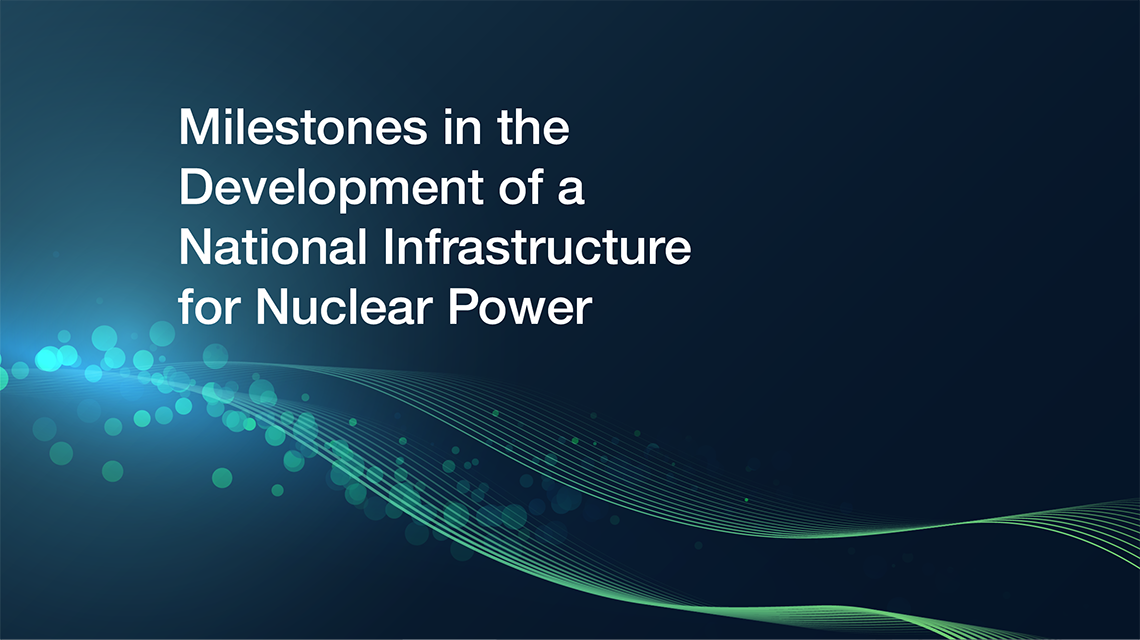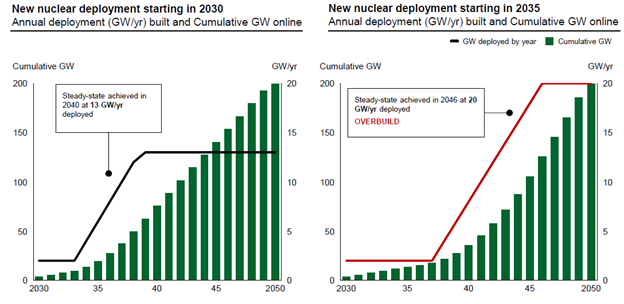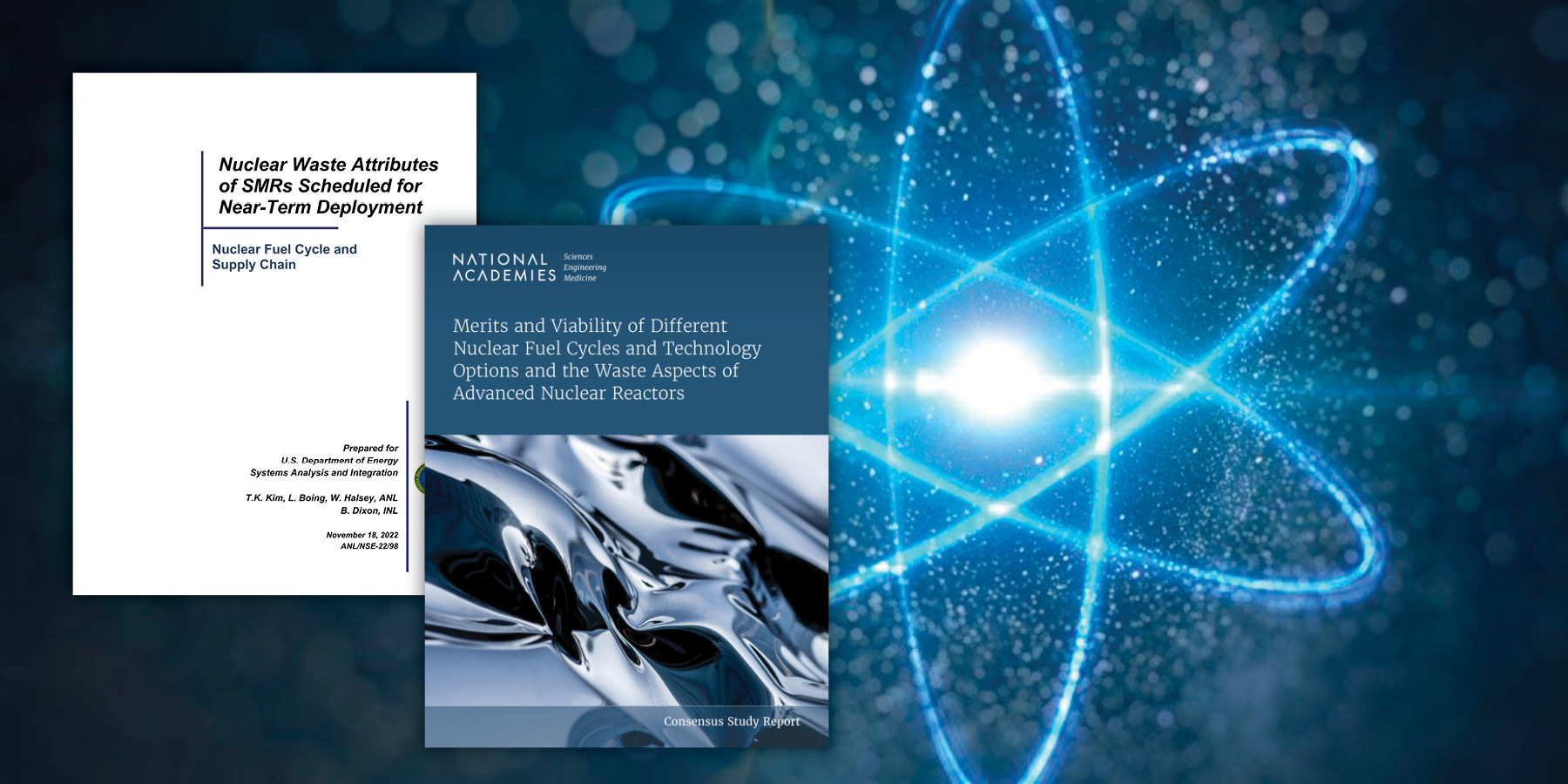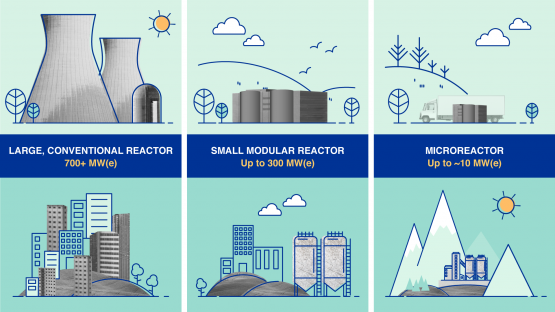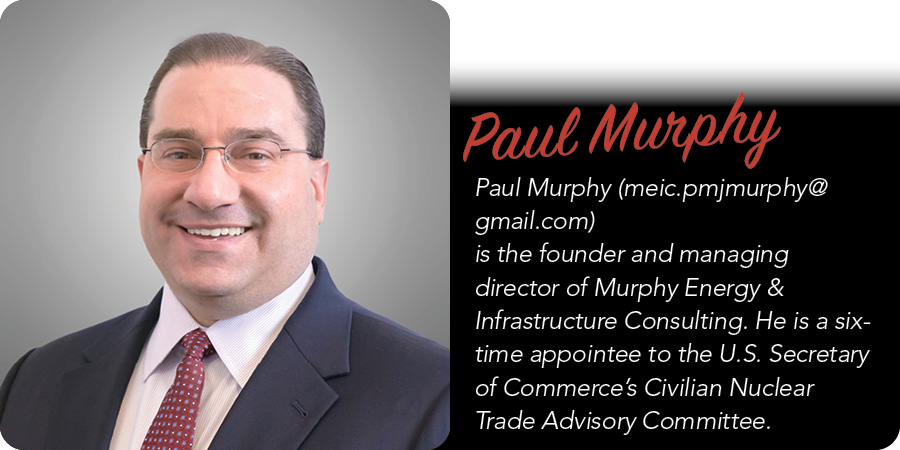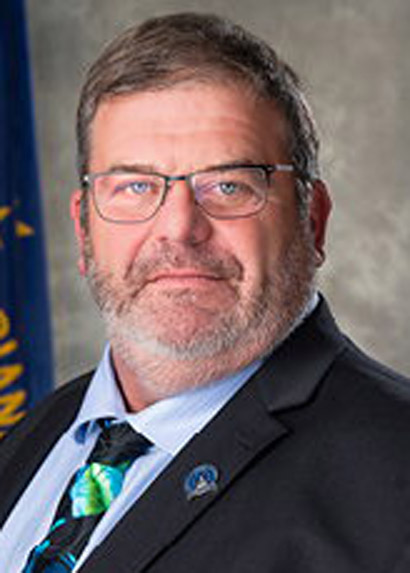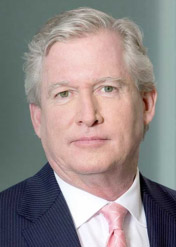Argonne director Paul Kearns, undersecretary of state for arms control and international security Bonnie Jenkins, EPRI chief nuclear strategy officer Neil Wilmshurst, and DOE acting assistant secretary for nuclear energy Michael Goff spoke at COP29 in Baku, Azerbaijan. (Photo: PNNL/Nazar Kholod)
Argonne National Laboratory will play a leading role in planning and rebuilding a nuclear-generated clean energy infrastructure for postwar Ukraine as part of the lab’s focus on developing small modular reactor applications to help countries meet energy security goals. The latest plans, described in a November 19 article, were announced on November 16 at COP29 in Baku, Azerbaijan.
At Amazon facilities in Virginia, Energy Secretary Jennifer Granholm celebrated support for new reactor deployments and announced that the DOE was accepting applications for SMR deployment funding. (Still shot from a video hosted on YouTube by The Climate Pledge)
Yesterday morning as Amazon, X-energy, Energy Northwest, and Dominion Energy were sharing a spotlight celebrating their investment in X-energy’s high-temperature gas-cooled reactor technology, the Department of Energy opened up the application process for up to $900 million in cost-shared funding to support the initial domestic deployment of a different type of reactor—light water reactors generating about 300 MWe that the DOE calls Gen III+ small modular reactors.
ANS CEO Craig Piercy welcomes tech industry's plans to build nuclear energy projects
Washington, D.C. — Craig Piercy, CEO of the American Nuclear Society (ANS), issued the following statement:
"The American Nuclear Society applauds the announced partnerships between Google and Kairos Power and by Amazon and X-energy. Together, these deals will add at least 820 megawatts of zero carbon electricity to the U.S. energy supply. This is a major step toward securing the commercial deployment of advanced nuclear technologies that will make the world a cleaner and more prosperous place."
Craig Piercy, ANS Executive Director/CEO (third from left), and ANS Board member Jess Gehin, associate laboratory director for nuclear science & technology at Idaho National Laboratory (second from left), join other officials at the ceremonial groundbreaking for TerraPower’s Natrium reactor demonstration project.
A ceremony in Wyoming yesterday marked the official start of construction of TerraPower’s planned Natrium reactor demonstration project.
While currently awaiting final review from the U.S. Nuclear Regulatory Commission, TerraPower is moving forward with nonnuclear construction work at a retired coal plant near Kemmerer, Wyo. The groundbreaking brought together TerraPower leaders, government officials, Natrium project partners, industry advocates, and community supporters.
A rendering of the Natrium plant. (Image: Terrapower)
The U.S. Nuclear Regulatory Commission has formally accepted TerraPower’s small modular reactor construction permit application and is scheduling it for review.
The company’s Natrium reactor demonstration project—the nation’s first commercial advanced reactor of its kind—would be built on land in Wyoming near one of the state’s retiring coal plants. Kemmerer Power Station Unit 1 would operate as a 345-MW sodium-cooled reactor in conjunction with molten salt–based energy storage.
From left: Piercy, Hart, Iyengar, Tobey
The latest virtual event produced by the American Nuclear Society brought together experts from the forefront of the global nuclear industry to discuss strategies for ensuring a safe, secure, and healthy expansion in the face of a rapidly changing energy and geopolitical landscape.
The webinar, moderated by ANS Executive Director/CEO Craig Piercy, featured J’Tia Hart, chief science officer for the National and Homeland Security Directorate at Idaho National Laboratory; Anagha Iyengar, deputy program director for analytics and innovation at the National Nuclear Security Administration’s Office of International Nuclear Security; and William Tobey, former NNSA deputy administrator for defense nuclear nonproliferation.
These graphs illustrate how rapidly scaling the nuclear industrial base would enable nearer-term decarbonization and increase capital efficiency, versus a five-year delay to reach the same 200 GW deployment by 2050. (Source: DOE, Pathways to Commercial Liftoff: Advanced Nuclear, Fig. 1)
The Department of Energy released Pathways to Commercial Liftoff: Advanced Nuclear earlier this month. It is one of the first in a series of reports on clean energy technologies and the private and public investments needed to overcome hurdles to full-scale deployment. The report makes a clear case for investment in nuclear power and challenges potential investors and operators to move beyond the current “wait and see” stalemate and generate “a committed orderbook . . . for 5–10 deployments of at least one reactor design by 2025.”
Participating in the forum were (from left) John Hopkins (NuScale Power), Renaud Crassous (EDF), Daniel Poneman (Centrus Energy), Adriana Cristina Serquis (CNEA), and Boris Schucht (Urenco).
The nuclear industry leaders assembled in Washington, D.C., last week to discuss small modular reactor supply chains agreed that lost generation capacity from the expected retirement of hundreds or thousands of coal power plants over the next decade—a cliff, in one panelist’s words—represents an opportunity that developers of SMRs and advanced reactors are competing to meet.
“I think in total 80 projects are ongoing,” said Boris Schucht, panel moderator and chief executive officer of Urenco Group, as he opened the forum. “Of course not all of them will win, and we will discuss today what is needed so that they can be successful.”
Purdue University, in West Lafayette, Ind.
Purdue University and Duke Energy have announced that they plan to jointly explore the feasibility of using advanced nuclear energy to meet the university’s long-term energy needs, “a move that may be unprecedented for a college campus.” A small modular reactor could meet the current and future needs for Purdue’s West Lafayette, Ind., campus, as well as provide excess power to the state’s electric grid, according to a joint press release.
A satellite image of Hawaii. Image: NASA
Jacob Wiencek, a self-described concerned resident of Honolulu, is doing his part to encourage the state of Hawaii to embrace nuclear power. An opinion piece written by Wiencek was published in Honolulu Civil Beat, an online, nonprofit news site, on August 4.





